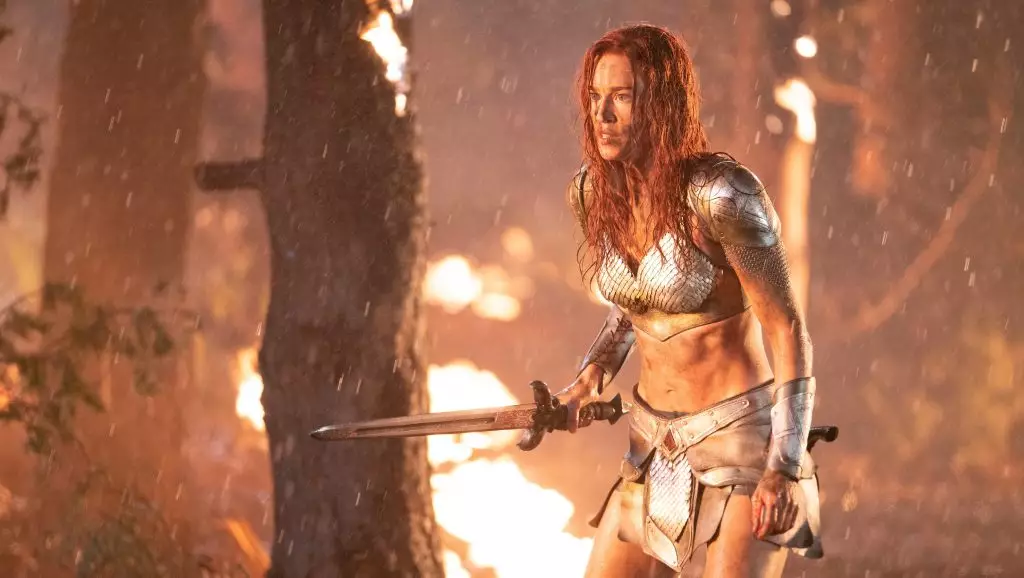The quest for revitalizing classic characters in cinema often stirs both excitement and skepticism. The impending reboot of “Red Sonja” emerges as a bold testament to the surging demand for powerful female representation in the action genre. Samuel Goldwyn Films has acquired the distribution rights for this much-anticipated project, aiming for a theatrical debut that seeks to capture the imaginations of audiences who crave both nostalgia and innovation in storytelling. Directed by M.J. Bassett, known for her adeptness at weaving compelling narratives in series like “Iron Fist” and “Ash vs. Evil Dead,” this incarnation of the warrior heroine is poised to re-establish the icon in the tapestry of modern cinema.
Bridging Past and Present
The original portrayal of Red Sonja in the 1985 film, characterized by the formidable presence of Arnold Schwarzenegger, feels like a distant memory in today’s cinematic landscape, dominated by superheroes and digitally enhanced spectacles. Back then, the character symbolized a tantalizing blend of sensuality and strength, which remains appealing but also reeks of outdated tropes in our contemporary milieu. What makes the current rendition particularly thrilling is the way it promises to distance itself from the demeaning “damsel in distress” archetype. Written by Tasha Huo, the screenplay is meant to lay a profound emphasis on Sonja’s agency, showcasing her journey of self-liberation, demonstrating that female narratives can be laced with grit and depth while maintaining magnetic allure.
Star Power and Diverse Talent
The casting of Matilda Lutz in the titular role not only reflects the ongoing shift toward inclusivity but also positions her as a potential superstar capable of carrying the torch of this beloved character. Featuring alongside her are talents like Robert Sheehan, Wallis Day, and Michael Bisping, who collectively lend their unique flair and charisma to enrich the narrative tapestry. Each actor brings their own strength and background, which raises expectations for a well-rounded representation of diverse affiliations and attributes. The collective enthusiasm from producers, including industry veterans like Avi Lerner and Mark Canton, hints at a well-orchestrated production that understands the stakes involved in bringing a long-cherished character back to life.
Empowerment Over Exploitation
One point of contention in contemporary reboots has been the exploitation of strong female characters for mere box-office appeal, without giving them substantial narratives or growth. However, early indications surrounding “Red Sonja” suggest that the filmmakers are attuned to contemporary themes such as empowerment, autonomy, and resilience. As commented by producer Luke Lieberman, audiences familiar with Sonja’s lore can expect the “heart and fire” that have always defined her, while newcomers will discover a complex protagonist equipped with formidable skills and an indomitable spirit. Such assertions are essential in validating the reboot’s aim to honor the legacy of the character while challenging antiquated concepts of femininity.
Anticipation and Potential Impact
Peter Goldwyn, president of Samuel Goldwyn Films, expressed a robust confidence in the film’s ability to resonate with fans, who have ardently awaited “Red Sonja’s” return. A dedicated fanbase, combined with an evolving cultural zeitgeist that favors narratives centering empowered women, presents a valuable opportunity for drawing in both long-time supporters and fresh audiences. The excitement surrounding the film reiterates a vital truth: that strong storytelling, especially in the realm of fantasy and adventure, can inspire rather than merely entertain.
As the release date approaches, the dynamics of anticipation evolve through the blending of traditional fandoms and modern expectations. “Red Sonja” seeks not just to retell a story but to redefine it — a mission that, if executed properly, can have lasting implications on how we view female heroes in cinematic spaces.
This groundbreaking portrayal has the potential to elevate the genre while challenging the status quo, proving that with the right vision and commitment to authenticity, celebrated characters can be reborn for a new era. Ultimately, this endeavor represents more than a cinematic venture; it embodies a cultural stride towards redefining the archetypes of heroism to include voices that have previously gone unheard.
